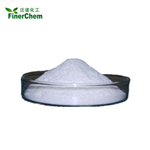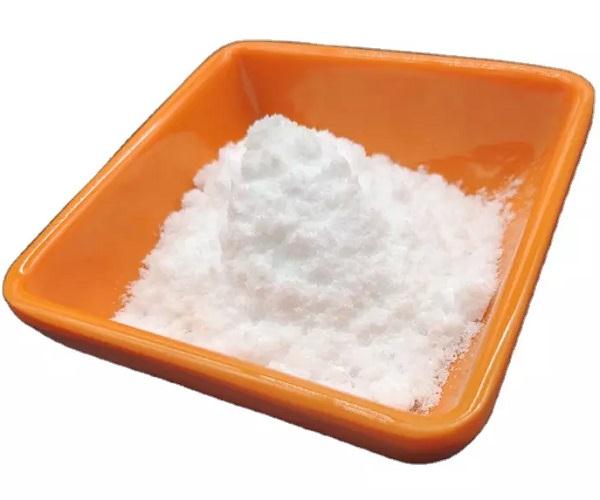- Potassium iodide
-

- $6.00 / 1kg
-
2025-04-15
- CAS:7681-11-0
- Min. Order: 1kg
- Purity: 99%
- Supply Ability: 2000KG/Month
- Potassium iodide
-

- $0.00 / 1KG
-
2025-04-15
- CAS:7681-11-0
- Min. Order: 1KG
- Purity: 99%
- Supply Ability: 500000kg
- Potassium iodide
-

- $0.00 / 25Kg/Drum
-
2025-04-15
- CAS:7681-11-0
- Min. Order: 1KG
- Purity: ≥99%
- Supply Ability: 500mt
Related articles - Pharmacology of Potassium Iodide
- Potassium Iodide is a metal halide composed of potassium and iodide with thyroid protecting and expectorant properties.Potassi....
- Mar 2,2022
- What is Potassium iodide?
- Potassium iodide is a white crystallinesolid, KI, with a strong bittertaste, soluble in water, ethanol, andacetone. It may be ....
- May 28,2021
|
| | Potassium iodide Basic information |
| Product Name: | Potassium iodide | | Synonyms: | Potassium Iodide, Crystal, Reagent;Potassium Iodide, Granular, Reagent;potassium iodide for food;Potassium iodide, 99.995%, extra pure;Potassium iodide, 99%, briquettes, extra pure;Potassium iodide, extra pure;Potassium iodide, for analysis;Potassium Iodide [for General Organic Chemistry] | | CAS: | 7681-11-0 | | MF: | KI | | MW: | 166 | | EINECS: | 231-659-4 | | Product Categories: | 19: K;Beaded Materials;Chemical Synthesis;Crystal Grade Inorganics;Inorganic Salts;Materials Science;Metal and Ceramic Science;Potassium Salts;Synthetic Reagents;metal halide;Etchants;Electronic Chemicals;Micro/Nanoelectronics;Pharmacopoeia (USP);Pharmacopoeia A-ZPharmacopoeia (USP);Halogenated SolutionsVolumetric Solutions;N - RSynthetic Reagents;Potassium;Titration;G - MTitration;Halogenated Solutions;Salt Solutions;Volumetric Solutions;Crystal Grade Inorganics;Inorganic Salts;Potassium Salts;PotassiumMetal and Ceramic Science;Salts;Synthetic Reagents;O-P, Puriss p.a. ACS;Puriss p.a. ACS;dyestuff;Inorganics;Essential Chemicals;Reagent Plus;Routine Reagents;Reference Material Silver nitrateTitration;Salt Concentrates;7681-11-0;bc0001;ACS GradeSynthetic Reagents;Puriss p.a.;O-P, Puriss p.a.;Analytical Reagents for General Use;Reference Material Sodium thiosulfate;Halogenated ConcentratesConcentrates (e.g. FIXANAL);Concentrates (e.g. FIXANAL);By Reference Material;Vitamins;TLC Visualization Reagents (by application);TLC Visualization Reagents (alphabetic sort);Molecular Biology Reagents;Molecular Biology;TLC Reagents, N-RDerivatization Reagents TLC;BioUltraDerivatization Reagents TLC;Pharmacopoeial Inorganics;Solution containers (VOLPAC);PotassiumTitration | | Mol File: | 7681-11-0.mol |  |
| | Potassium iodide Chemical Properties |
| Melting point | 681 °C (lit.) | | Boiling point | 184 °C(lit.) | | density | 1.7 g/cm3 | | bulk density | 1500kg/m3 | | vapor density | 9 (vs air) | | vapor pressure | 0.31 mm Hg ( 25 °C) | | refractive index | 1.677 | | Fp | 1330°C | | storage temp. | 2-8°C | | solubility | H2O: 1 M at 20 °C, clear, colorless | | form | particles (round) | | pka | 0.06[at 20 ℃] | | Specific Gravity | 3.13 | | color | Yellow | | PH | 6.0-9.0 (25℃, 1M in H2O) | | Odor | odorless | | Flame Color | Violet or light purple | | biological source | rabbit | | Water Solubility | 1.43 kg/L | | Sensitive | Hygroscopic | | Merck | 14,7643 | | Dielectric constant | 5.1200000000000001 | | Exposure limits | ACGIH: TWA 0.01 ppm | | BCS Class | 1 | | Stability: | Stable. Protect from light and moisture. Incompatible with strong reducing agents, strong acids, steel, aluminium, alkali metals, brass, magnesium, zinc, cadmium, copper, tin, nickel and their alloys. | | InChIKey | NLKNQRATVPKPDG-UHFFFAOYSA-M | | LogP | -0.958 at 25℃ | | CAS DataBase Reference | 7681-11-0(CAS DataBase Reference) | | NIST Chemistry Reference | Potassium iodide(7681-11-0) | | EPA Substance Registry System | Potassium iodide (7681-11-0) | | Absorption | cut-off at 273nm in H2O at 1M |
| | Potassium iodide Usage And Synthesis |
| Chemical Properties | Potassium iodide is a white crystals, granules, or powder; strong, bitter, saline taste. becomes yellowish when exposed to bright light due to photochemical decomposition liberating traces of free iodine. Soluble in water, alcohol, acetone, and glycerol. slightly soluble in ether and ammonia. It may be prepared bythe reaction of iodine with hot potassiumhydroxide solution followed by separation from the iodate (which isalso formed) by fractional crystallization. In solution it has the interestingproperty of dissolving iodine to formthe triiodide ion I3-, which is brown. Potassium iodide is widely used as ananalytical reagent, in photography,and also as an additive to table salt toprevent goitre and other disordersdue to iodine deficiency.
 | | Occurrence | Potassium iodide is found in seaweed. Some important applications of this compound involve its use in pharmaceuticals and as a source of iodine in food,especially in animal and poultry feed. Potassium iodide is added to table salt to provide iodine in human food.
Another major use is in making photographic emulsions. In analytical chemistry, potassium iodide is used in iodometric titration with starch indicator to analyze dissolved oxygen, dissolved chlorine, sulfide, and other analytes in water. | | Uses | Potassium Iodide is a source of iodine and a nutrient and dietary supplement. it exists as crystals or powder and has a solubility of 1 g in 0.7 ml of water at 25°c. it is included in table salt for the preven- tion of goiter.Potassium Iodide is used primarily used in the treatment of radiation poisoning due to environmental contamination by iodine-131. It is also manufacture of photographic emulsions; in animal and poultry feeds to the extent of 10-30 parts per million; in table salt as a source of iodine and in some drinking water; also In animal chemistry. In medicine,potassium iodide is used to regulate the thyroid gland. | | Application | Potassium iodide was first used as the primary halide in Talbot’s calotype process, then in the albumen on glass process followed by the wet collodion process. It was also used as a secondary halide in silver bromide gelatin emulsions, animal feeds, catalysts, photographic chemicals, and for sanitation. Potassium iodide is produced by reaction of potassium hydroxide with iodine. The product is purified by crystallization from water. Potassium iodide is ionic compound which iodine ions and silver ions can form yellow precipitate silver iodide (when exposes to light, it can decompose, it can be used to make high-speed photographic film), silver nitrate can be used to verify the presence of iodine ions. | | Definition | ChEBI: Potassium iodide is a metal iodide salt with a K(+) counterion. A compound that contains pentavalent iodine, which is usually ionically bound to electropositive atoms. It is a scavenger of hydroxyl radicals. It has a role as a radical scavenger and an expectorant. It contains an iodide. It is a type of iodine that is not radioactive and can be used to help block one type of radioactive material, radioactive iodine (I-131), from being absorbed by the thyroid. | | Preparation | Potassium iodide is made by absorption of iodine in potassium hydroxide:
I2 + 6KOH → 5KI + KIO3 + 3H2O
Most potassium iodate, KIO3 , is separated from the product mixture by crystallization and filtration. Remaining iodates are removed by evaporation of the solution and other processes, such as carbon reduction or thermal decompostion at 600oC to iodide:
2KIO3 → 2KI + 3O2
Another method of preparation that does not involve the formation of iodate is by treating iron turnings with iodine solution. The product, ferrosoferric iodide, Fe3I8?16H2O, is boiled with 15 wt% potassium carbonate solution:
Fe3I8.16H2O + 4K2CO3 → 8 KI + 4CO2 + Fe3O4 + 16H2O
A similar method is used to prepare potassium bromide, discussed earlier (see Potassium Bromide.)
Potassium iodide can be prepared by reacting hydriodic acid with potassium bicarbonate:
HI + KHCO3 → KI + CO2 + H2O
It is purified by melting in dry hydrogen.
Potassium iodide also may be obtained by various electrolytic processes. | | Brand name | Iosat (Anbex); Thyro-Block (Medpointe); Thyrosafe
(R R Registrations); Thyroshield (Fleming). | | General Description | Potassium iodide is an odorless white solid. Sinks and mixes with water. (USCG, 1999) | | Air & Water Reactions | Water soluble. | | Reactivity Profile | Bromine trifluoride rapidly attacks the following salts: barium chloride, cadmium chloride, calcium chloride, cesium chloride, lithium chloride, silver chloride, rubidium chloride, potassium bromide, potassium chloride, Potassium iodide, rhodium tetrabromide, sodium bromide, sodium chloride, and sodium iodide [Mellor 2, Supp. 1:164, 165. 1956]. | | Health Hazard | May irritate eyes or open cuts. | | reaction suitability | reaction type: volumetric | | Biological Activity | Proteasomes are protein complexes th at facilitate the degradation of damaged proteins by proteolysis. Proteasomes are located throughout the eukaryotic cells but primarily localized in nucleus. They are composed of 2 complexes, a 20S core and a 19S regulator. The modified proteasome referred to as immunoproteasome contains an alternate regulator th at is 11S regulator or PA28 against 19S regulator. PSME3 gene encodes the gamma subunit of the 11S regulator. REG-gamma (also known as PA28-gamma) stimulates the trypsin-like catalytic subunit of the proteasome but inhibits the chymotrypsin-like and postglutamyl-preferring (PGPH) subunits. REG-gamma interact with both MDM2 and p53 proteins and stimulates ubiquitination- and MDM2-dependent proteasomal degradation of p53 which in turn restricts its accumulation and inhibits apoptosis after DNA damage. | | Pharmacokinetics | Potassium Iodide is a metal halide composed of potassium and iodide with thyroid protecting and expectorant properties. Potassium iodide can block absorption of radioactive iodine by the thyroid gland through flooding the thyroid with non-radioactive iodine and preventing intake of radioactive molecules, thereby protecting the thyroid from cancer causing radiation. In addition, this agent acts as an expectorant by increasing secretion of respiratory fluids resulting in decreased mucus viscosity. | | Clinical Use | Potassium iodide is used to treat the cutaneous lymphatic
form of sporotrichosis, although newer agents
are also effective in this disorder and may be better tolerated tolerated.
The drug is also used for erythema nodosum and
nodular vasculitis. | | Safety Profile | Poison by intravenous
route. Moderately toxic by ingestion and
intraperitoneal routes. Human teratogenic
effects by ingestion: developmental
abnormalities of the endocrine system.
Experimental teratogenic and reproductive
effects. Mutation data reported. Explosive
reaction with charcoal + ozone,
trifluoroacetyl hypofluorite, fluorine
perchlorate. Violent reaction or ignition on
contact with dazonium salts, diisopropyl
peroxydicarbonate, bromine pentafluoride,
chlorine trifluoride. Incompatible with
oxidants, BrF3, FClO, metaltic salts, calomel.
When heated to decomposition it emits very
toxic fumes of K2O and I-. See also
IODIDES. | | Purification Methods | Crystallise it from distilled water (0.5mL/g) by filtering the near-boiling solution and cooling. To minimise oxidation to iodine, the process can be carried out under N2 and the salt is dried under a vacuum over P2O5 at 70-100o. Before drying, the crystals can be washed with EtOH or with acetone followed by pet ether. It has also been recrystallised from water/ethanol. After 2 recrystallisations, ACS/USP grade had Li and Sb at <0.02 and <0.01 ppm respectively. [Lingane & Kolthoff Inorg Synth I 163 1939.] |
| | Potassium iodide Preparation Products And Raw materials |
|